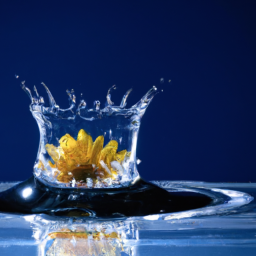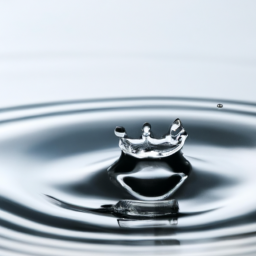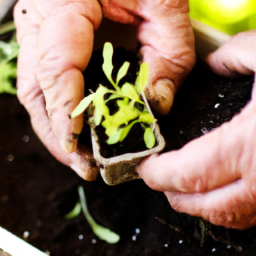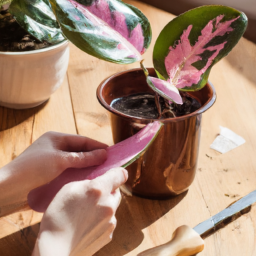
Have you ever wondered if there’s a refreshing and easy way to propagate your plants? Well, look no further because we have the perfect solution for you: water propagation! In this blog post, we will explore the fascinating world of water propagation and how it can be a game-changer for any plant enthusiast. Whether you’re a seasoned green thumb or just starting your journey into the world of gardening, water propagation is a technique that you won’t want to miss out on. So, grab a glass of water and join us as we dive into the world of water propagation: a refreshing approach to plant propagation.
Benefits of Water Propagation in Plant Propagation: A Refreshing Approach
Welcome to the world of water propagation, a refreshing approach to propagating plants that offers numerous benefits. Whether you are a seasoned gardener or a novice plant enthusiast, water propagation can be an exciting and rewarding technique to expand your plant collection. In this guide, we will explore the advantages of water propagation and provide you with a step-by-step process to get started.
1. Enhanced Root Development
One of the significant benefits of water propagation is its ability to promote enhanced root development in plants. When you propagate a plant in water, it allows the roots to grow freely without any soil or other growing mediums restricting their growth. This unrestricted growth results in stronger and healthier root systems, which ultimately leads to more robust and resilient plants.
Furthermore, water propagation provides an excellent opportunity to observe root development firsthand. As the roots start to emerge and grow, you can witness the process and gain a deeper understanding of how plants establish their root systems. This knowledge can be invaluable when caring for your propagated plants in the future.
Additionally, water propagation allows you to detect any potential issues with root development early on. If you notice any signs of root rot or other problems, you can take immediate action to remedy the situation before it affects the overall health of the plant.
2. Increased Success Rate
Another advantage of water propagation is its higher success rate compared to other propagation methods. Many plants have a higher chance of successfully rooting in water due to the absence of soil-borne diseases and pests. Water also provides the necessary hydration for the cutting, ensuring it receives the moisture it needs to develop roots.
Moreover, water propagation eliminates the risk of over or under-watering, which can be common pitfalls when using traditional soil-based propagation methods. With water propagation, you can easily monitor the water level and make adjustments as needed, ensuring optimal moisture conditions for root development.
Furthermore, the transparency of the water allows you to observe the cutting’s progress closely. You can see the roots growing and monitor their health, making it easier to intervene if any issues arise. This increased visibility provides a sense of control and allows you to make informed decisions about the propagation process.
3. Versatility and Flexibility
Water propagation offers unparalleled versatility and flexibility when it comes to propagating a wide range of plant species. Unlike traditional methods that may require specific soil compositions or growing conditions, water propagation can be used for various plants, including succulents, herbs, vines, and even some woody-stemmed plants.
This flexibility allows you to experiment and propagate plants that might be challenging or finicky to root using other methods. Additionally, water propagation enables you to propagate multiple cuttings simultaneously, maximizing your chances of success and expanding your plant collection more rapidly.
Furthermore, water propagation provides an opportunity to create stunning displays and decorations. You can use clear glass containers to showcase the growing roots, adding an aesthetic element to your home or garden. This visual appeal, combined with the joy of watching your plants thrive, makes water propagation a truly refreshing approach to plant propagation.
In conclusion, water propagation offers numerous benefits, including enhanced root development, increased success rates, and versatility. By choosing water propagation as your preferred method, you can enjoy the beauty and rewards of watching your plants grow and thrive. So, grab your cuttings, find a suitable container, and dive into the refreshing world of water propagation!


Common Mistakes to Avoid in Water Propagation: A Refreshing Approach for Succulents
Water propagation is an exciting and refreshing approach to propagate succulents. It allows you to witness the growth and development of new plants from leaf or stem cuttings, all while enjoying the beauty of water roots. However, like any gardening technique, there are common mistakes that beginners often make. In this article, we will discuss these mistakes and provide you with valuable insights on how to avoid them.
1. Overwatering
One of the most common mistakes in water propagation is overwatering. It’s important to remember that succulents are adapted to survive in arid conditions, and excessive moisture can lead to root rot and other fungal diseases. When propagating succulents in water, it’s crucial to strike a balance between providing enough moisture for root development and avoiding waterlogged conditions.
To avoid overwatering, start by using a container with drainage holes or a glass jar with a narrow opening. This will prevent water from accumulating and ensure proper air circulation. Additionally, only change the water when it becomes murky or starts to smell. This will help maintain a healthy environment for the roots.
Another tip is to use distilled or filtered water instead of tap water. Tap water often contains chemicals, such as chlorine and fluoride, which can be harmful to succulents. By using purified water, you reduce the risk of exposing your plants to these chemicals.
2. Lack of Light
While water propagation provides a unique opportunity to observe root growth, it’s important not to neglect the need for adequate light. Succulents require bright, indirect light to thrive, even during the propagation process. Placing your water-propagated succulents near a sunny window or using artificial grow lights can help provide the necessary light intensity.
A common mistake is placing the container in a dimly lit area, resulting in weak and elongated growth. Insufficient light can also lead to etiolation, where the succulent stretches towards the light source, becoming leggy and weak. To prevent this, ensure your succulents receive at least 6-8 hours of bright, indirect light per day.
Remember to rotate the container regularly to promote even growth and prevent the succulent from leaning towards one direction. This will help your water-propagated succulents develop strong stems and maintain an attractive, compact form.
3. Premature Transplantation
Transplanting water-propagated succulents too early is another common mistake that can hinder their growth and survival. While it’s exciting to see roots emerging from the cuttings, it’s essential to allow them to develop a robust root system before transferring them to soil.
As a general rule, wait until the roots are at least 1-2 inches long and have a healthy white color. This indicates that the roots are actively absorbing water and nutrients. Transplanting too early can cause the fragile roots to break or become damaged, leading to stress and potential plant failure.
When the roots are ready, choose a well-draining potting mix specifically formulated for succulents. Gently remove the cutting from the water, being careful not to damage the delicate roots, and plant it in the soil. Water sparingly after transplantation, allowing the plant to adjust to its new environment gradually.
By avoiding these common mistakes in water propagation, you can increase your chances of success and enjoy the rewarding experience of growing new succulents. Remember to maintain a balance of moisture, provide adequate light, and be patient during the transplantation process. With practice and attention to detail, you’ll become an expert in this refreshing approach to succulent propagation.
In a Nutshell
Have you ever wanted to grow new plants from cuttings but found it difficult to get them to root? Well, look no further! Water propagation is a refreshing and easy approach that allows you to grow new plants from cuttings without the stress and hassle of traditional methods.
Water propagation involves placing plant cuttings in water and allowing them to develop roots before transferring them to soil. It’s a simple and straightforward process that even beginner gardeners can master. Not only is it a fun and rewarding way to expand your plant collection, but it also gives you the opportunity to share your favorite plants with friends and family. So grab a glass of water and get ready to dive into the world of water propagation – your plants will thank you!
Q&A Corner:
Q1: What is water propagation?
A1: Water propagation is a method of plant propagation where you grow new plants by placing cuttings or plant parts in water instead of soil. It involves submerging the stems or leaves of a plant in water, allowing them to develop roots and eventually grow into a new plant.
Q2: How does water propagation work?
A2: Water propagation works by providing the necessary conditions for plant cuttings to develop roots. When you place a cutting in water, it creates a moist environment that encourages root growth. The cutting absorbs water and nutrients through its stem or leaves, stimulating the growth of new roots. Once the roots are well-established, you can transfer the cutting to soil for further growth.
Q3: What are the benefits of water propagation?
A3: Water propagation offers several benefits. Firstly, it is a simple and cost-effective method that requires minimal supplies. It also allows you to observe root development, making it a great educational activity. Additionally, water propagation can be a successful method for propagating certain plant species that may be difficult to propagate through other means.
Q4: Which plants are suitable for water propagation?
A4: Many plants can be propagated through water propagation, including popular houseplants like pothos, philodendron, and spider plants. Succulents, such as jade plants and sedums, can also be propagated in water. Additionally, herbs like mint, basil, and sage can be successfully propagated using this method. It’s important to note that not all plants are suitable for water propagation, so it’s best to research specific plant species before attempting this technique.
Q5: What are some tips for successful water propagation?
A5: To increase your chances of success with water propagation, here are a few tips:
- Choose healthy plant cuttings with at least two nodes (the points where leaves or branches emerge).
- Use clean, room temperature water to prevent the growth of harmful bacteria.
- Change the water regularly to maintain cleanliness and provide fresh nutrients.
- Place the cuttings in a bright location without direct sunlight to avoid overheating.
- Be patient and allow the roots to develop before transferring the cutting to soil.
Dr. Olivia Green is a botanist with over two decades of experience in indoor plant cultivation. She holds a Ph.D. in Plant Biology and has dedicated her career to researching plant behavior in controlled environments. Dr. Green is passionate about helping plant enthusiasts master the art of indoor gardening through her extensive knowledge and practical insights.


